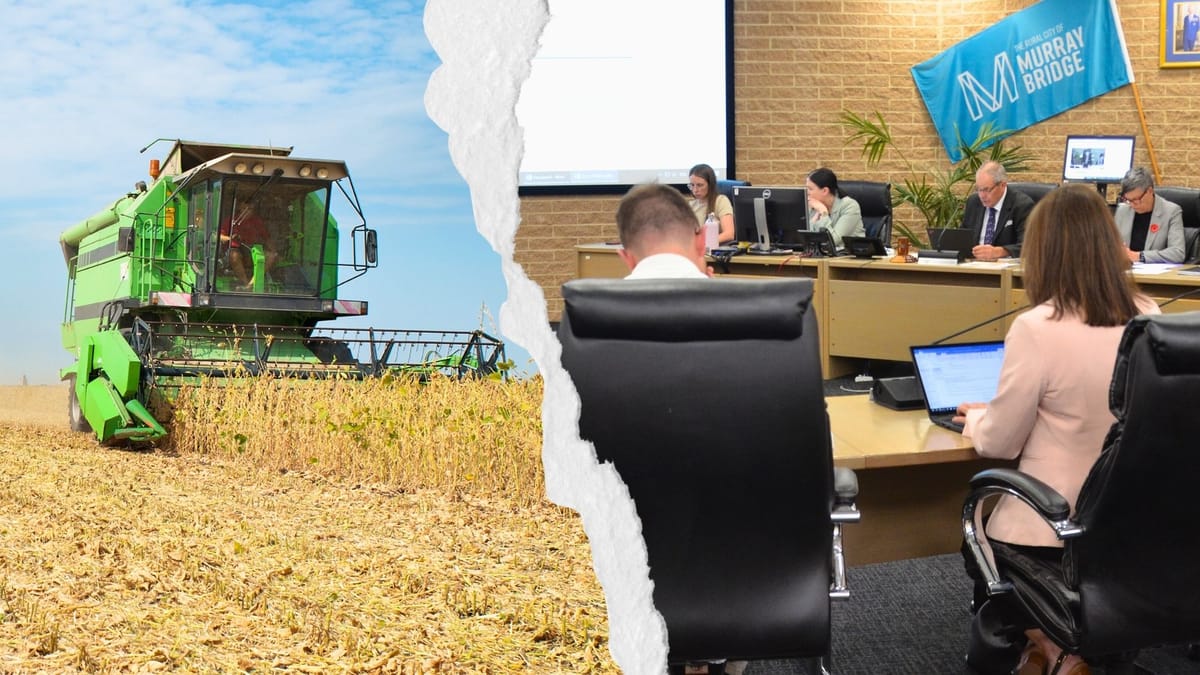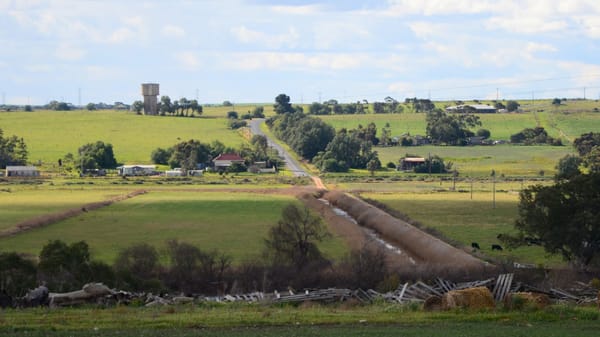Council rates plan may give farmers relief at others’ expense
The Murray Bridge council is about to launch a public consultation about whether to re-balance who pays how much in property rates.

This story is now free to read. Help Murray Bridge News tell more stories like this by subscribing today.
Farmers hit hard by rising land values could get some relief under a Murray Bridge council plan to re-balance its property rate collection practices.
But homeowners would feel a tighter pinch from 2025-26 onwards.
Councillors last week voted to consult the public about whether to change the way the council works out how much to charge people in property rates.
The consultation will not focus on whether rates should go up or down – that will continue to be decided around May or June each year, as part of the council’s annual budgets.
Instead, locals will be asked two questions.
One is whether certain types of ratepayers – residents, businesses, industries, farmers and so on – should pay more or less than others.
Councillor Clem Schubert said the district’s hard-working farmers could do with a break.
“I know that the (owners of) properties worth $5 million or thereabouts would be paying $600 or $700 a week in council rates,” he said.
“One in particular I know … it’s $1240 a week.
“The rural industry cannot handle those sorts of council rates.
“We’re all hurting because we can’t set our prices … we’re in a bad position.”
The council’s other question is whether it would be a good idea to fix part of your council rates bill each year, a little bit like a fixed home loan, so that rate rises wouldn’t have quite so big an effect.
Here’s how the council’s two possible solutions could work.
How are council rates calculated?
If you own your own home, you get a council rates bill each year which is based on the value of your property.
If your home is worth $450,000, multiply that by the council rate for this year – 0.005246 – and you’ll get a $2361 rates bill.
But if you own a shop, or a factory, or a farm or vacant block, you’ll pay a different amount:
- Primary production land: 10% lower rate
- Vacant land: 30% higher
- Industrial land: 40% higher
- Commercial land: 60% higher
The first of the two council proposals is to change those percentages.
Farmers, businesses and industries would all pay a smaller share than before, while people engaged in land banking – holding on to vacant land with hopes of turning a profit later – would cop a whack:
- Primary production land: 20% lower rate
- Vacant land: 50% higher
- Industrial land: 20% higher
- Commercial land: 40% higher
To make up for the lost revenue, the council would then increase the rate in the dollar charged against all ratepayers by about four per cent across the board.
In the end, the change would benefit a farmer sitting on $1 million worth of property – he or she would pay almost $350 less in council rates for the year.
But the homeowner in the example above would pay $99 more – and that’s before any adjustments that councillors might make as part of their annual budget.
What about a fixed rate?
The other idea under consideration: fix part of people’s council rates bill, so that it wouldn’t fluctuate so much from year to year.
Instead of paying:
- property value x 0.005246
you might pay:
- property value x 0.004492 plus $500
or maybe:
- property value x 0.003979 plus $750
Your rates bill would be similar to what it is at the moment, according to council projections, although the owners of low-end properties would pay a bit more and those with deluxe homes would pay slightly less.
The council will begin seeking feedback on both options from members of the public in the next few weeks.
Keeping the status quo will also be an option.
This is not a money grab, councillor assures ratepayers
At their November meeting, councillors were told that staff wanted to find the “most equitable” way of dividing up council rates among all ratepayers.
They had considered issues such as the divides between townships and rural areas, owner-occupiers and investors, commerce and industry; and the effect of encouraging new business and discouraging vacant properties.
General manager Thuyen Vi-Alternetti said much number-crunching and many discussions had led to this point.
Councillor Airlie Keen hoped ratepayers would be able to understand that the exercise was not a “rates grab”.
“It’s about trying to collect the same amount of rates (overall) in a slightly different way,” she said.
“We’re looking ... to spread the burden across the council (district) as fairly as possible.
“We’re not seeking to raise $1 more than is necessary.”
She understood the financial pain people were feeling, she said, due in part to skyrocketing property values.
But she commended council staff for finding $1 million worth of savings within the organisation in the past year.
A public consultation period about the new approach to property rates will open in the coming weeks.





